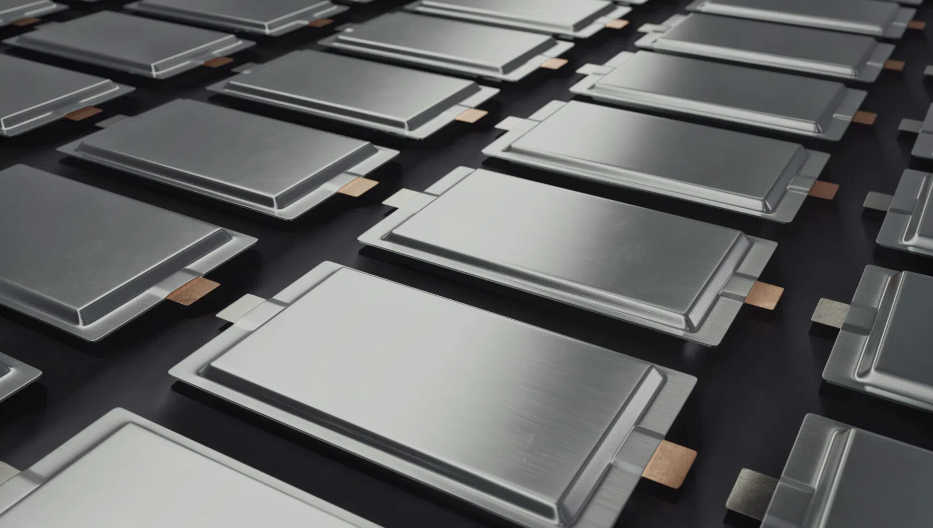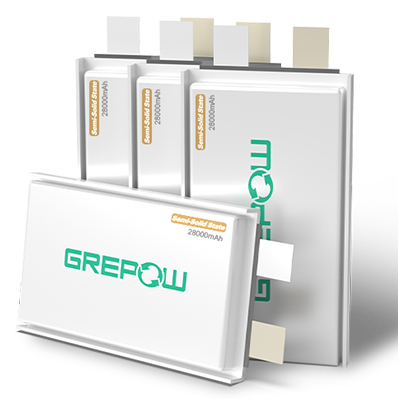Next-Generation eVTOL Battery Technology
The United Nations projects that 68% of the world's population will live in urban areas by 2050, up from 55% in 2018. Urban air mobility (UAM)—an ecosystem unlocking the airspace for on-demand passenger and cargo transportation by flying vehicles—has the potential to disrupt urban mobility systems. Electric vertical takeoff and landing (eVTOL) aircraft, combining helicopters’ convenience of local takeoff and landing, airplanes’ efficient aerodynamic flight, and electric powertrains' low noise and environmental impact, have emerged as the most promising candidate for UAM.
In recent years, more and more organizations have announced their development of eVTOL systems and, in some cases, are even showing previews of systems that are intended to hit the market in just a few years. A recent report from Roland Berger identifies ongoing eVTOL projects worldwide, and predicts that commercial passenger-UAM routes will take off before 2025, with revenues prospectively soaring to US$ 90-billion a year by 2050. As new design ideas emerge, there is one important question that needs to be asked: To keep up with the developments in eVTOL aircraft, what design requirements need to be considered for the eVTOL batteries?

Limits Between Battery and eVTOL Performance
The performance of eVTOL aircraft is intrinsically linked to the capabilities of their batteries, creating a dynamic of mutual constraints. On one hand, eVTOL batteries need to be light enough to not hinder the aircraft’s flight capabilities, yet powerful enough to provide sufficient energy for vertical takeoff, sustained flight, and safe landing. On the other hand, the demands of eVTOL flight—such as rapid power draw during takeoff and the need for energy reserves for emergency situations—place significant pressure on battery performance.
The specific power limits the vehicle's load capacity
The different power requirements of the aircraft in each flight phase are more evident in the eVTOL. A typical eVTOL trip has five stages: takeoff, climb, cruise, descent, and landing, where the power output required by the battery at distinct states of the vehicle’s flight is different. Most eVTOLs use the most power whilst taking off and landing.
The specific energy limits the vehicle's range
The battery's specific energy determines the upper limit of the vehicle’s range. According to the Fast-Forwarding to a Future of On-Demand Urban Air Transportation report published by Uber in 2016, eVTOL vehicles should have a minimum effective range of more than 100 miles (about 160 kilometers). Using this potential minimum range, the required minimum available specific energy of the battery would be around 230Wh/kg.
Battery recharging speeds limit operational intervals
Only a limited amount of energy remains in the aircraft after landing, and the vehicle requires recharging before the next takeoff. The aircraft can be recharged before the next group of passengers board the aircraft, or the battery could be swapped out directly for a fully charged one, however, purchasing multiple batteries for replacement is likely to be expensive – battery cost currently ranges from 20% to 50% of the overall manufacturing cost of aerial vehicles. To increase the operational efficiency of eVTOL flights, charging times should be as short as possible, especially during busy times.
The aging of the battery at a high C-rate limits the lifespan of eVTOL
At a 1C discharge rate, the number of cycles in a battery’s cycle life is around 1500. Batteries for eVTOLs need to operate under high charge-discharge current which reduces the battery's life if it is charged quickly at the current level of technology. If charged at 5C speed, the battery’s cycle life will be around 1,000 charge / discharge cycles. Thus, a major challenge for batteries is the need to ensure their lifespan to reduce operating costs. Even if the aircraft only performs three flights a day and charges three times, the battery needs to be replaced once a year, which is likely to be expensive.
Top Battery Makers Partnering With Evtol Manufacturers
The rapid evolution of the eVTOL market has attracted the attention of leading battery manufacturers, resulting in strategic partnerships aimed at advancing battery technology. These collaborations are essential to overcoming the technological barriers that eVTOL aircraft face, particularly in terms of energy storage, weight, and safety.
CATL battery boosts autoflight evtol for longer flights
CATL, one of the largest battery manufacturers globally, is making headlines with its groundbreaking work on eVTOL batteries. Partnering with AutoFlight, CATL is set to develop a battery system that aims to achieve the longest flight duration in the eVTOL sector. This collaboration is particularly significant as it addresses one of the key challenges in the industry—extending flight range without compromising safety or performance. CATL’s eVTOL battery technology is expected to offer unprecedented energy density (500 Wh/kg), ensuring that AutoFlight’s eVTOL can perform extended missions, making it a leader in long-range eVTOL flights.
Dovetail to provide batteries for crisalion's evtol aircraft
Dovetail, a prominent name in battery technology, has recently announced its partnership with Crisalion, an innovative eVTOL aircraft manufacturer. This collaboration will see Dovetail supplying advanced battery packs designed specifically for Crisalion's cutting-edge eVTOL models. These battery packs are engineered to deliver high energy density while maintaining a lightweight profile, crucial for maximizing flight time and operational efficiency in eVTOL applications. These battery packs also adhere to stringent standards like DO-311 and DO-160G, ensuring they are fully certified under various regulatory environments, including EASA, CASA, and FAA. Dovetail’s technology focuses on fast charging capabilities, aiming to reduce turnaround time between flights, which is vital for commercial operations.
Next-Generation eVTOL Battery Technology
Like with EVs, lithium-ion batteries are widely considered as the frontrunner battery choice for eVTOLs, but alternative technologies, such as solid-state batteries, sodium-ion batteries, and fuel cells, are also being considered. The impact of new battery technology on the future development of eVTOLs should not be underestimated. Lithium-ion batteries are no longer the only choice, solid-state batteries, sodium-ion batteries, and fuel cell technology are also emerging. These new technologies meet different needs such as long range, large payloads, and fast charging, offer unique battery performance characteristics, and provide a solution for future large-scale applications of eVTOLs.
Solid-state batteries
A solid-state battery is a battery technology that uses solid electrodes and a solid electrolyte, which theoretically means that the capacity and power of these batteries will be higher than lithium batteries. Semi-solid-state batteries are already in mass production, whilst full-solid-state batteries are expected to enter mass production in 2025.
Sodium-ion battery
Sodium-ion batteries are similar to lithium-ion batteries but use sodium ions as the charge carrier. Compared to lithium-ion batteries, current sodium-ion batteries have somewhat higher costs, slightly lower energy density, better safety characteristics, and similar power delivery characteristics.
Hydrogen Fuel Cell
A hydrogen fuel cell is an electrochemical cell that converts the chemical energy of hydrogen and uses an oxidizing agent to run electricity through a pair of redox reactions. The most significant feature of hydrogen fuel cells is their high specific energy and their replacement of the hydrogen bottle, which cuts down the time to charge when compared to lithium batteries.
Conclusion
The advancement of next-generation battery technologies will be instrumental in realizing the full potential of eVTOLs. The dynamic interplay between battery performance and eVTOL capabilities highlights the need for continuous innovation and collaboration within the industry. With emerging technologies such as solid-state and sodium-ion batteries, alongside hydrogen fuel cells, offering promising alternatives, the future of eVTOL battery technology looks both exciting and transformative. As a global leading lipo battery manufacturer, Grepow provides semi-solid state batteies with an energy density of up to 350Wh/kg, supporting 5C fast charging, designed to fulfill the high-performance and long-endurance needs of eVTOLs. If you have any questions or needs, please feel free to contact us at info@grepow.com.
Related Articles:
eVTOL Battery vs EV Battery: What’s the Difference?
What Is a Fixed Wing VTOL Drone?
Grepow Battery was interviewed by Global Sky Media about eVTOL Power
New generation of manned eVTOL announced from Airbus - CityAirbus
Related Articles
-

Vatican Drone Show: Where Technology Meets Faith
2025-09-15 -

New Release: Tattu TA300 Multi-Channel Smart Charger for Drone Soccer
2025-09-12 -

How to Handle Battery Overheating Issues?
2025-08-12
Related products
-

37000mAh Semi-Solid State High Energy Density Battery
-

35200mAh Semi-Solid State High Energy Density Battery
-

30000mAh Semi-Solid State High Energy Density Battery
-

28000mAh Semi-Solid State High Energy Density Battery
-

20000mAh Semi-Solid State High Energy Density Battery
















































